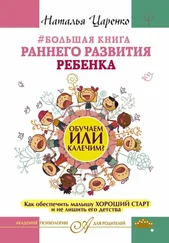Martin, G. B. & Clark, R. D. (1987), «Distress Crying in Neonates: Species and Peer Specificity», Developmental Psychology, 18, стр. 3–9.
Maughan, A. & Cicchetti, D. (2002), «Impact of Child maltreatment and Interadult Violence on Children’s Emotion Regulation Abilities and Socioemotional Adjustment», Child Development, 73, (5), стр. 1525–1542.
Maurel, O. (2009), Oui, la nature humaine est bonne! (Да, человеческая природа добрая!), Robert Laffont.
Mayer, R. E. (2004), «Should There Be a Three-Strikes Rule Against Pure Discovery Learning? The Case for Guided Methods of Instruction», The American Psychologist, 59, (1), стр. 14–19.
Mazeau, M. (13 ноября 2014), «Agir concrètement pour les enfants „dys“» (Конкретно действовать для детей «dys»), коллоквиум «Вклад когнитивных наук в школу: какое образование нужно учителям?» (L’apport des sciences cognitives à l’école: quelles formation pour les enseignants?), Collège de France.
McCrink, K. & Wynn, K. (2004), «Large-Number Addition and Subtraction by 9-Month-Old Infants», Psychol. Sci., 15, (11), стр. 776–781.
Mehler, J., Lambertz, G., Juszyk, P. W. & Amiel-Tison, C. (1986), «Discrimination de la langue maternelle par le nouveau-né. Comptes rendus de l’Académie des sciences» (Способность новорожденных к различению родного языка. Отчет Академии наук), série 3, Sciences de la vie, 303, (15), стр. 637–640.
Meltzoff, A. N., Kuhl, P. K., Movellan, J. & Sejnowski, T. J. (2009), «Foundations for a New Science of Learning», Science, 325, (5938), стр. 284–288. doi: 10.1126/science.1175626
Mischel, W., Ebbesen, E. B., Raskoff Zeiss, A. (1972), «Cognitive and Attentional Mechanisms in Delay of Gratification», Journal of Personality and Social Psychology, 21, (2), p. 204–218.
Moll, J., Krueger, F., Zahn, R., Pardini, M., de Oliveira-Souza, R. & Grafman, J. (2006), «Human Fronto-Mesolimbic Networks Guide Decisions About Charitable Donation», Proceedings of the National Academy of Science, 103, стр. 15623–15628.
Montanaro, S. (1991), Understanding the Human Being: The Importance of the First Three Years of Life, ABC–CLIO.
Montessori, M. (1988), Dr Montessori’s Own Handbook, Schocken Books.
Montessori, M. (1989), Education for a New World, ABC–CLIO.
Montessori, M. (1989), The Child, Society and the World: Unpublished Speeches and Writings, ABC–CLIO.
Montessori, M. (2004), Pédagogie scientifique (Научная педагогика), том 1, Desclée de Brouwer.
Montessori, M. (2006), L’Enfant (Ребенок), Desclée de Brouwer.
Montessori, M. (2007), L’Enfant dans la famille (Ребенок в семье), Desclée de Brouwer.
Montessori, M. (2007), Pédagogie scientifique (Научная педагогика), том 2, Desclée de Brouwer.
Montessori, M. (2012), The 1946 London Lectures, Montessori publishing company.
Nagy, E. (2008), «Innate Intersubjectivity: Newborns’ Sensitivity to Communication Disturbance», Developmental Psychology, 44, (6), стр. 1779–1784.
Nagy, E. & Molnar, P. (2004), «Homo Imitans or Homo Provocans? Human Imprinting Model of Neonatal Imitation», Infant Behavior and Development, 27, стр. 54–63.
National Institute of Child Health and Human Development (2000), «Report of the National Reading Panel. Teaching Children to Read An Evidence-Based Assessment of the Scientific: Research Literature on Reading and its Implications for Reading Instruction», NIH Publication no 00–4769, Washington, DC, U. S. Government Printing Office.
National Scientific Council on the Developing Child (2004), «Children’s Emotional Development is Built into the Architecture of Their Brains, Working Paper no 2».
National Scientific Council on the Developing Child (2004), «Young Children Develop in an Environment of Relationships: Working Paper no 1».
National Scientific Council on the Developing Child (2004), «Young Children Develop in an Environment of Relationships, Working Paper no 1».
National Scientific Council on the Developing Child (2005/2014), «Excessive Stress Disrupts the Architecture of the Developing Brain: Working Paper no 3», updated edition.
National Scientific Council on the Developing Child (2007), «The Science of Early Childhood Development: Closing the Gap Between What We Know and What We Do».
National Scientific Council on the Developing Child (2007), «The Timing and Quality of Early Experiences Combine to Shape Brain Architecture, Working Paper no 5».
National Scientific Council on the Developing Child (2010), «Early Experiences Can Alter Gene Expression and Affect Long-Term Development, Working Paper no 10».
National Scientific Council on the Developing Child (2010), «Persistent Fear and Anxiety Can Affect Young Children’s Learning and Development, Working Paper no 9».
Nelson, C. A. (2000), From Neurons to Neighborhoods, National Academy Press.
Nelson, C. A., Zeanah, C. H., Fox, N. A., Marshall, P. J., Smyke, A. T. & Guthrie, D. (2007), «Cognitive Recovery in Socially Deprived Young Children: The Bucharest Early Intervention Project», Science, 318, (5858), стр. 1937–1940.
O’Connor, T. G., Rutter, M., Beckett, C., Keaveney, L., Kreppner, J.-M. (2000), «The Effects of Global Severe Privation on Cognitive Competence: Extension and Longitudinal Follow-Up», Child Development, 71, (2), стр. 376–390.
Payne, K. J. (2010), Simplicity Parenting: Using the Extraordinary Power of Less to Raise Calmer, Happier, and More Secure Kids, Ballantine Books.
Pena, M., Werker, J.-F. & Dehaene-Lambertz, G. (2012), «Earlier Speech Exposure Does not Accelerate Speech Acquisition», Journal of Neuroscience, 32, (33), стр. 11159–11163.
Piaget, J. (1988), Psychologie et pédagogie (Психология и педагогика), Gallimard, «Folio».
Piazza, M. (20 ноября 2012 г.), «Le goût des nombres et comment
l’acquérir» (Как привить вкус к числам), коллоквиум Sciences cognitives & Éducation (Когнитивные науки и образование), Collège de France.
Prehn-Kristensen, A., Munz, M., Göder, R., Wilhelm, I., Korr, K., Vahl, W., Baving, L. (2014), «Transcranial Oscillatory Direct Current Stimulation During Sleep Improves Declarative Memory Consolidation in Children With Attention-Deficit/Hyperactivity Disorder to a Level Comparable to Healthy Controls», Brain Stimulation.
Presbie, R. J. & Coiteux, P. F. (1971), «Learning to Be Generous or Stingy: Imitation of Charing Behaviour as a Function of Model Generosity and Vicarious Reinforcement», Child Development, 42, (4), стр. 1033–1038.
Pyle, R. M., The Rise and Fall of Natural History, Orion, 2001.
Ramus, F. (20 ноября 2012 г.), «Les difficultés d’apprentissage de l’enfant et leurs origines» (Трудности усвоения у ребенка и их причины), коллоквиум Sciences cognitives & Éducation (Когнитивные науки и образование), Collège de France.
Rennels, J., Langlois, J. H., Hoss, R. A. & Griffin, A. M. (2004), «Origins of a Stereotype: Categorization of Facial Attractiveness by 6-Month-Old Infants», Developmental Science, 7, (2), стр. 201–211.
Ricard, M. (2013), Plaidoyer pour l’altruisme (Речь в защиту альтруизма), Pocket.
Ricard, M., Singer, T. (2015), Vers une société altruiste (К альтруистическому обществу), Éd. Allary.
Rilling, J., Gutman, D., Zeh, T., Pagnoni, G., Berns, G. et al. (2002), «A Neural Basis for Social Cooperation», Neuron, 35, (2), стр. 395–405.
Читать дальше
Конец ознакомительного отрывка
Купить книгу












